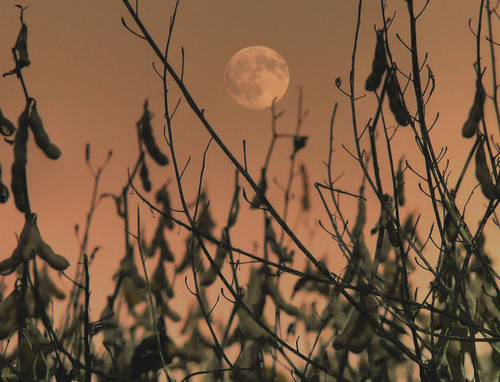
Harvest Moon, Sept. 25th, 2007. Image courtesy of joiseyshowaa.
An equinox occurs twice each year, at the moment the sun passes directly over Earth's equator. It is commonly believed that on this date, the day and night are of equal length; however, this is not strictly true. In fact, for those observers away from the equator, there is always a slight excess of daytime on the equinox. The moment at which light hours are equal to dark hours is actually called the equilux. For most people on Earth, the equilux occurs just before the vernal equinox and just after the autumnal equinox.
Traditionally, the vernal equinox occurs around March 20th or 21st, while the autumnal equinox occurs around September 22nd or 23rd. In between the equinoxes, the Earth's axial tilt causes one hemisphere to receive more of the sun's energy than the other. In the Northern Hemisphere, we experience summer when our half of the globe is tilted toward the sun and winter when it is tilted away. At the equinoxes, however, the Earth is tilted in the direction of its orbit, rather than in the direction of the sun. This means observers at equal latitudes above and below the equator receive equal amounts of sunlight.

The Earth's tilt accounts for a seasonal climate in the mid-latitudes. Counterclockwise from top left: summer solstice, fall equinox, winter solstice, spring equinox.
Image courtesy of Tau'olunga.
So tonight, as the Earth shows its full-frontal glory to the sun, make sure to watch the evening unfold. The Harvest Moon will appear enormous on the eastern horizon, and the light from both sunset and moonrise will create a unique and rare kind of twilight. This eerie glow, together with Jupiter shining brightly just below the full moon, should create quite a memorable sight for stargazers on the northern half of the globe. Happy fall!
No comments:
Post a Comment